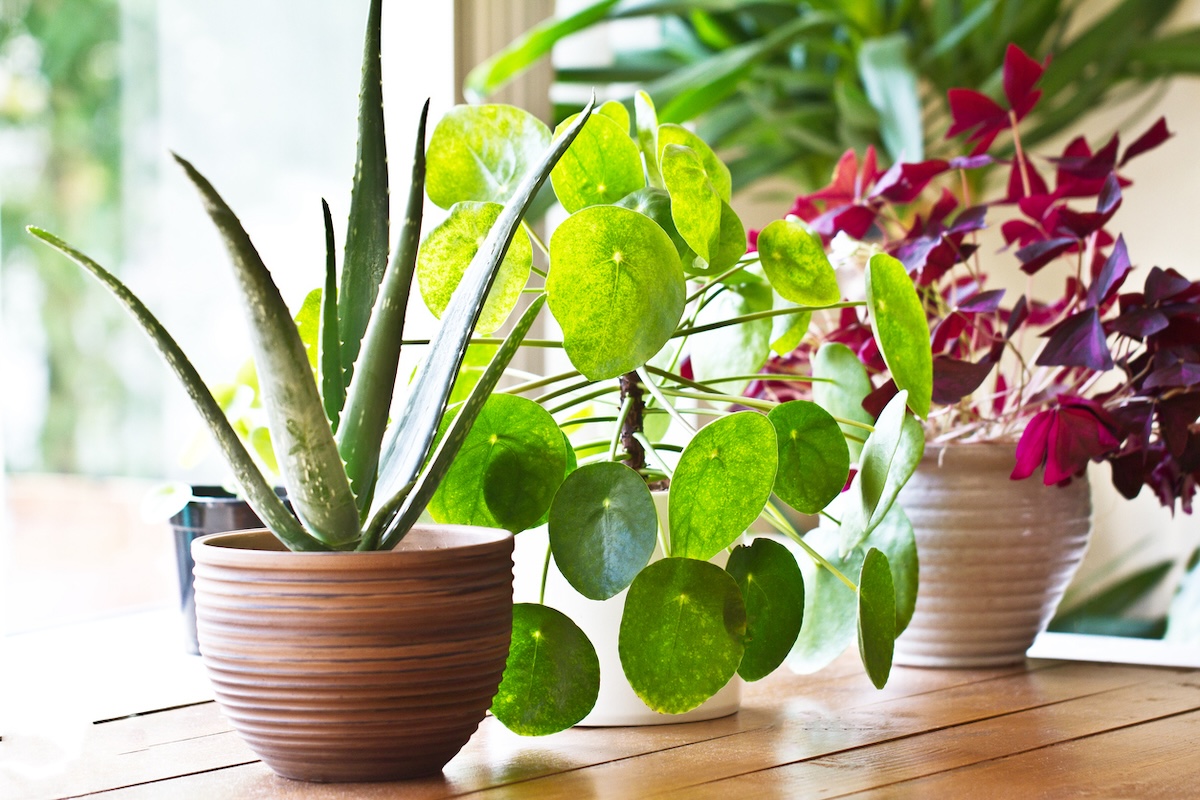

We may earn revenue from the products available on this page and participate in affiliate programs. Learn More ›
Houseplants provide many benefits, from improving indoor air quality to boosting mood and morale. When selecting plants, it’s important to take into consideration their light requirements.
Many favorite plants are chosen to live indoors with us because they prefer (or at least tolerate) bright, indirect light. To supply indirect sunlight for plants, place them in an east window, a spot suitably distanced from a south or west window, or a curtained window placement for gentler light.
Other plants require direct sunlight vs. indirect sunlight—stronger light from an unshaded south or west exposure. This light could burn leaves on more sensitive plants, but some plants thrive in unshaded south-facing window light.
Be aware that plants receiving strong light may need more frequent watering, as the sun can dry them out quickly. Watering and fertilizing requirements diminish during winter months, when even southern exposure decreases due to the sun’s angle.
RELATED: Why It Matters Whether Your Home Faces North, South, East, or West
1. Pincushion cactus (Mammilaria spp.)
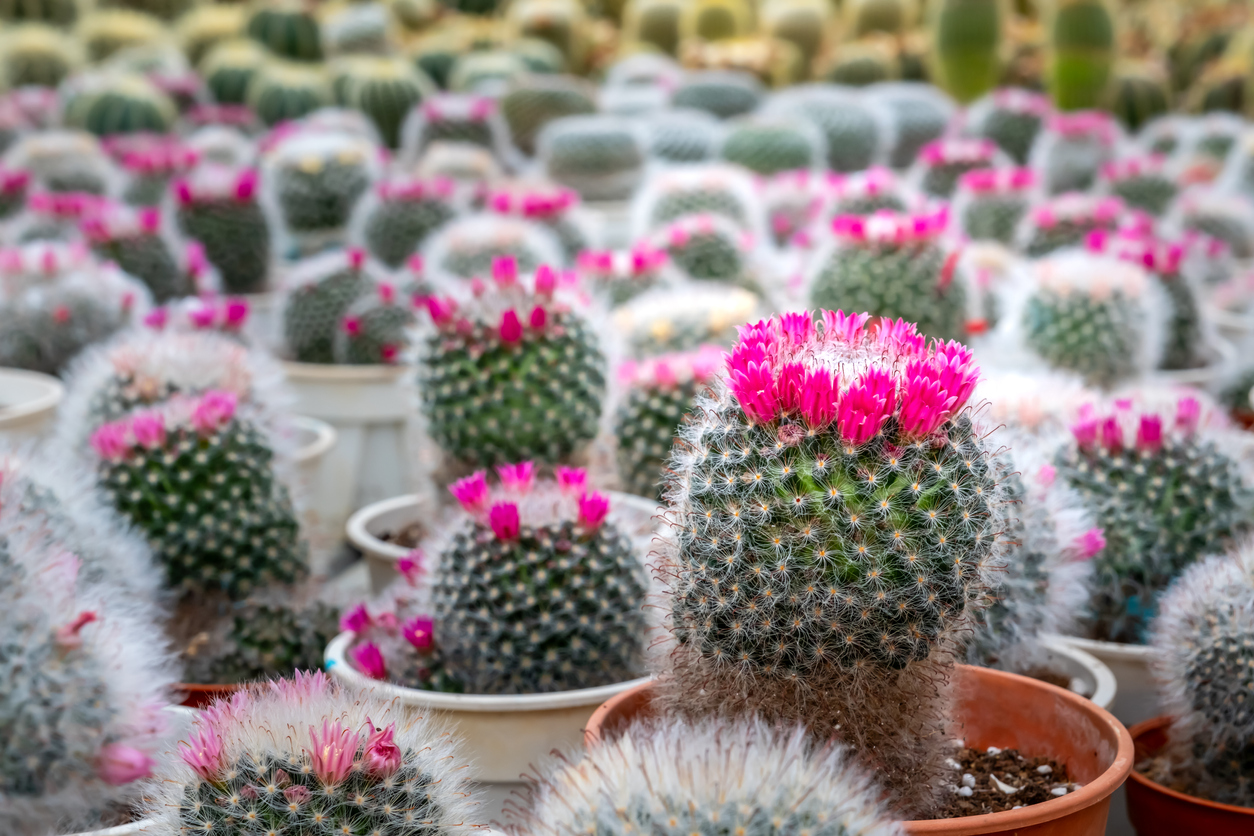
Most succulents and cactus varieties make excellent plants for south-facing windows. These spiny desert-dwellers like a lot of sunshine and warmth.
Pincushion cacti range from the small, dome-shaped Mammillaria spinosissima to the taller, columnar ladyfinger cactus, M. elongata, with its clusters of spiky stems and colorful flowers that circle the tip of each stem. Good drainage is a must. No need to water all winter; just give a monthly misting and a half-strength dose of cactus fertilizer.
2. Bird of Paradise (Strelitzia reginae)
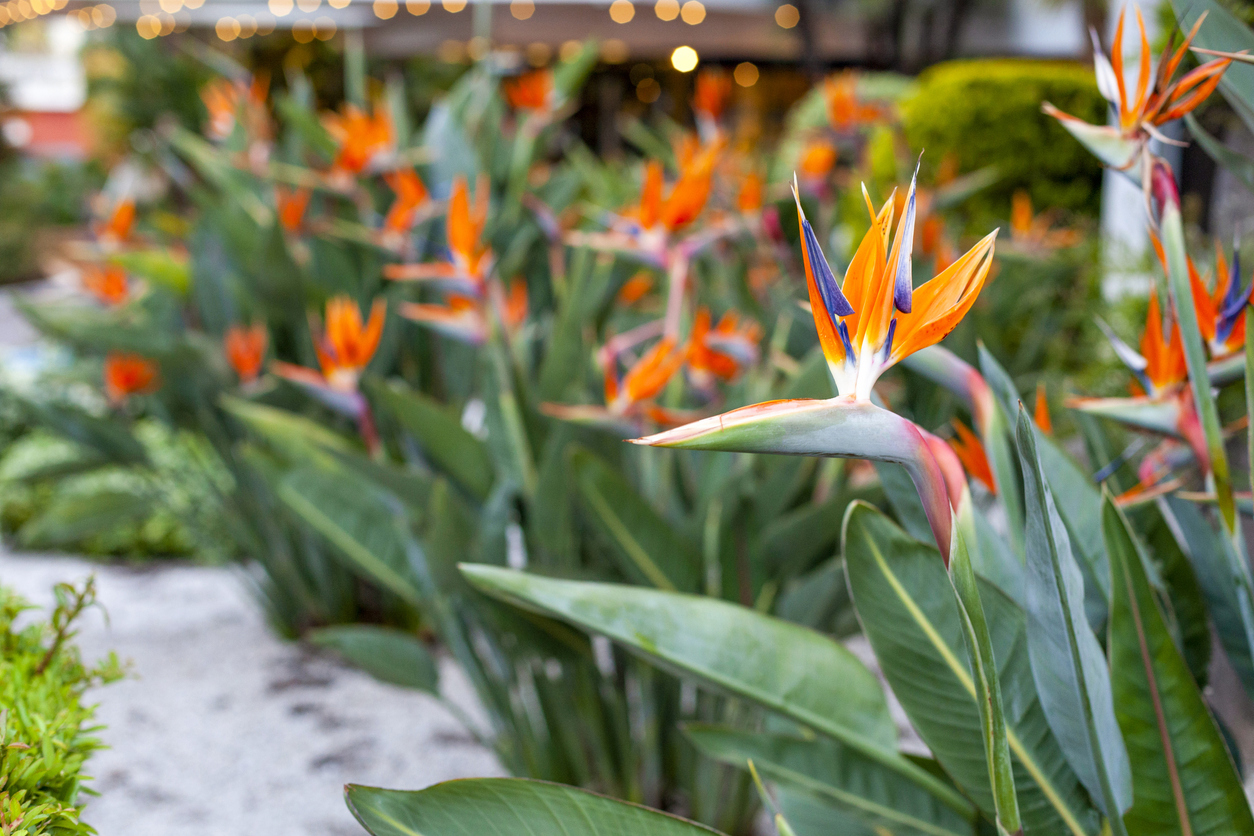
Commonly seen as a landscaping border in southern climes, the bird of paradise makes a striking impression indoors with its large leaves, exotic blooms, and imposing height of up to 10 feet. These low-maintenance, full-sun window plants don’t require a lot of water, but they do appreciate high humidity. Mature plants of at least 3 years may produce flowers in late winter or spring, especially if the plant is root-bound. Bird of paradise houseplants enjoy summering outdoors.
3. Snake plant (Sansevieria trifasciata)
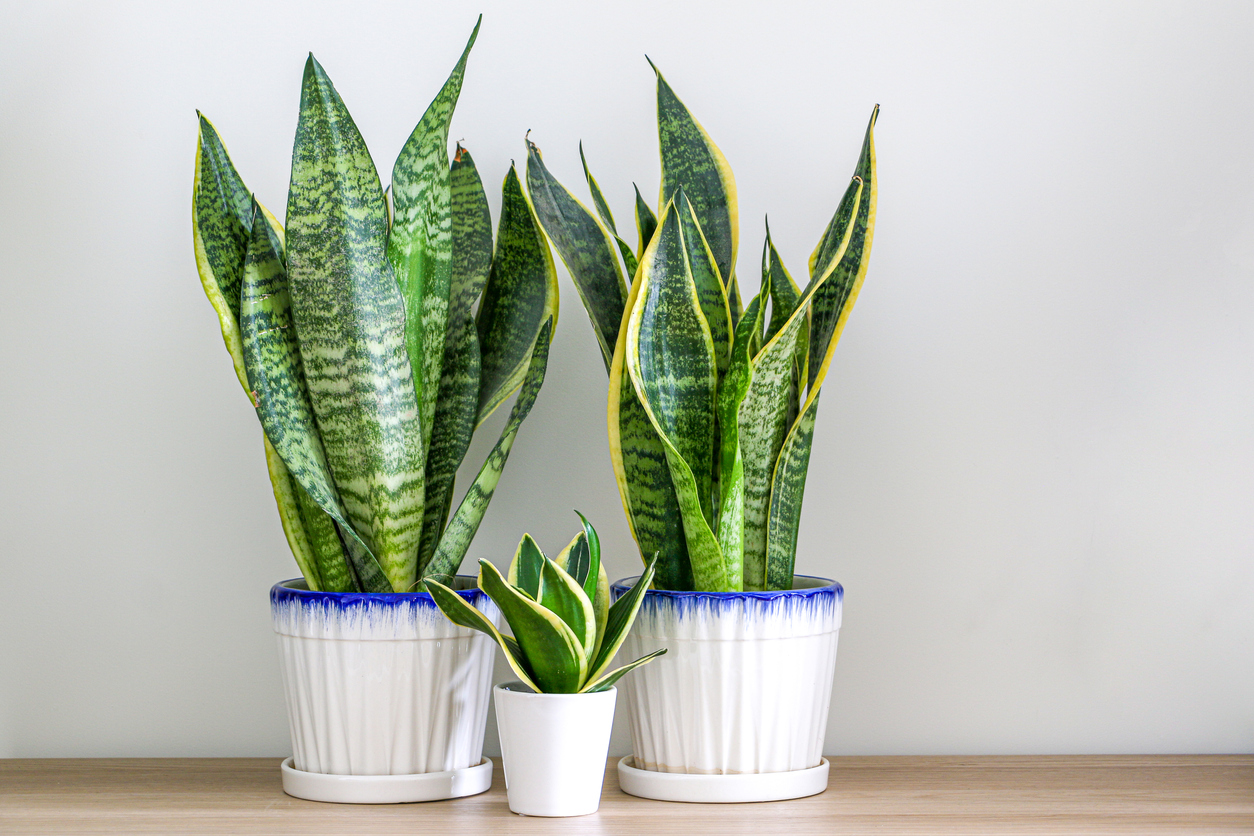
Sometimes referred to as mother-in-law’s tongue for its sharp blade-like leaves, the snake plant is another low-maintenance plant that adds drama to interior spaces. Its tall, narrow, rigid, pointy leaves grow straight up from the base. Although slow-growing, they can reach up to 8 feet tall when fully grown. A snake plant doesn’t need a lot of watering. Actually, it can’t tolerate a lot of watering and may deteriorate when overwatered. Other than that, it’s nearly indestructible. In fact, it’s one of the few that can also thrive in indirect lighting for plants and even low light.
4. Croton (Codiaeum variegatum)
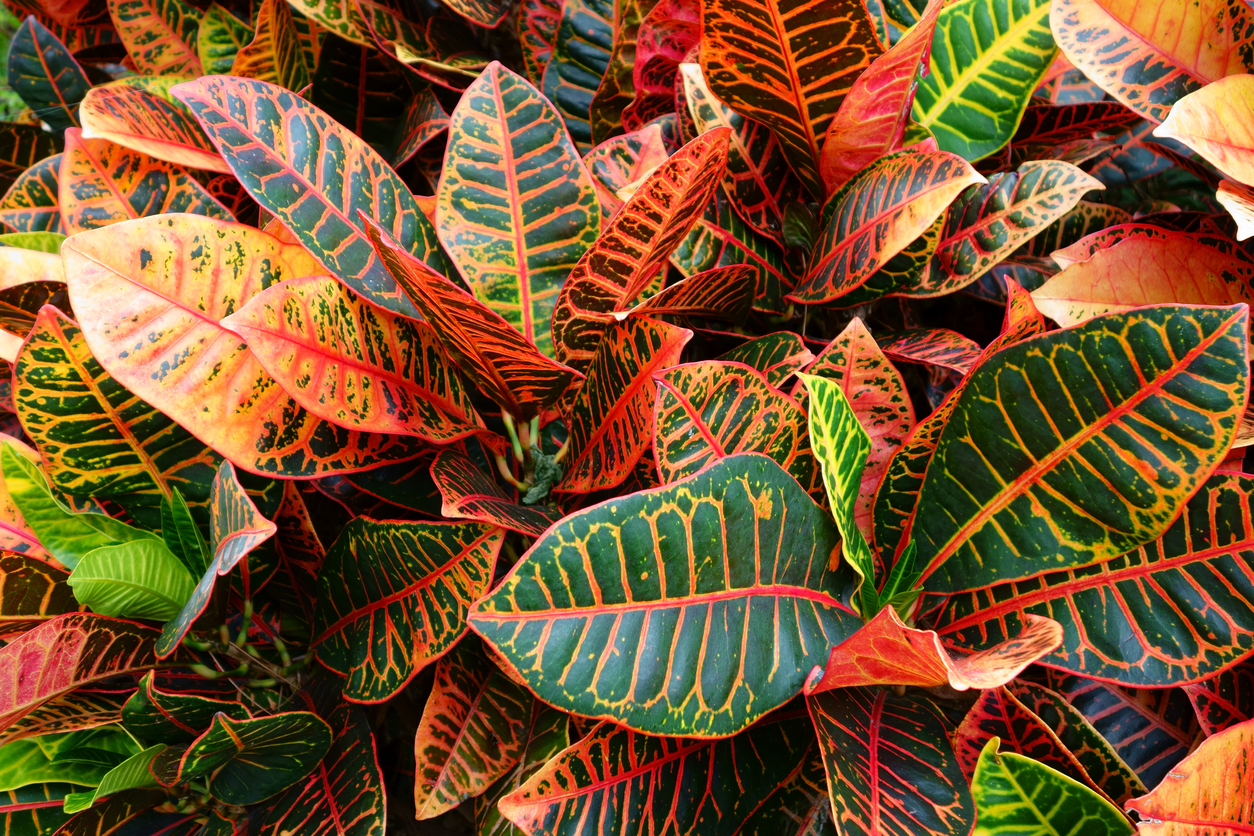
Who needs flowers when a leafy croton provides a kaleidoscope of colorful leaves? Thick, glossy leaves come in an assortment of colors: yellow, orange, red, green, bronze, pink, and purple. Give it warm temperatures, lots of light, a moderate amount of water, and well-drained soil, and you’ll enjoy this rainbow of color on a full, lush plant that can grow tall and bushy. They won’t tolerate cold temperatures. Be aware that crotons produce a sap that can irritate the skin, and every part of it is poisonous if ingested.
5. Spider plant (Chlorophytum comosum)
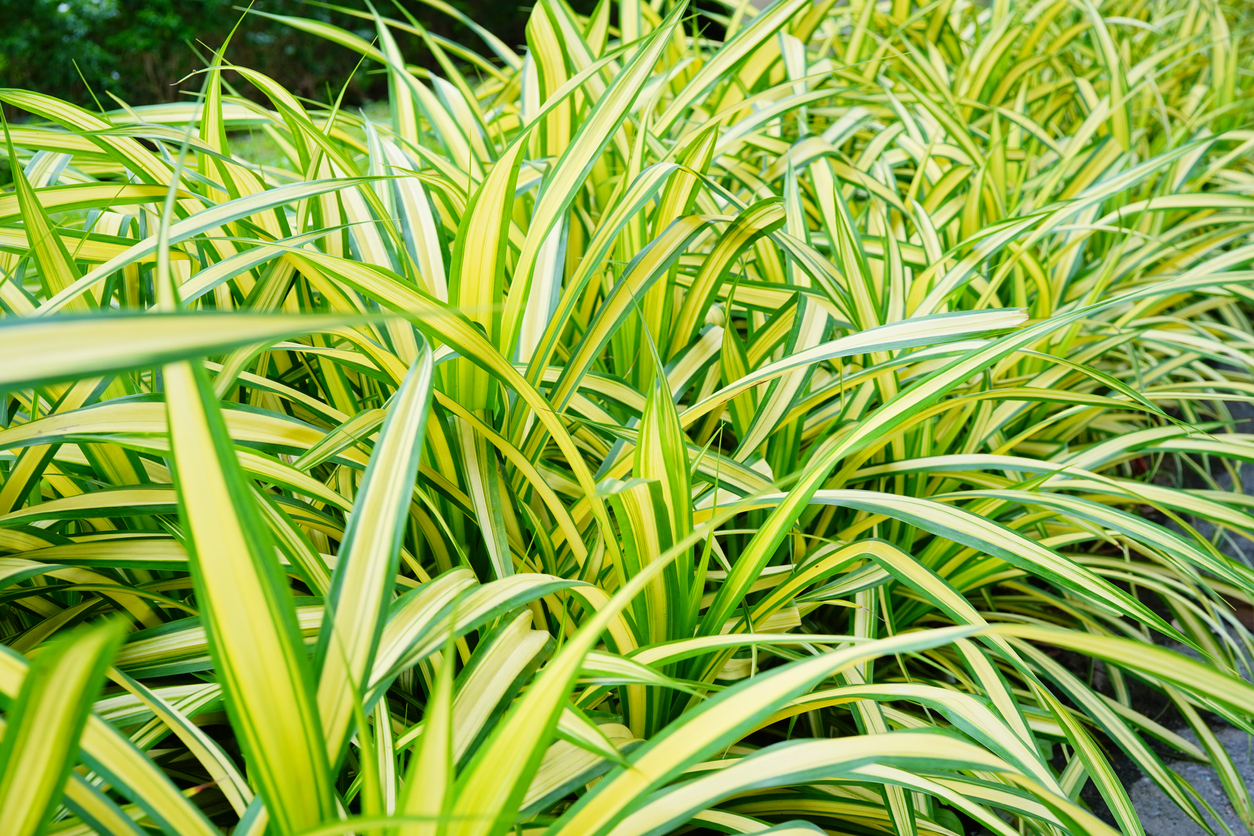
This South African stunner features striped ribbon-like leaves arching out from the center and cascading down over the pot, dripping stems sprouting little mini-me plantlets. The visual effect is reminiscent of a spider; hence the nickname. As easy to care for and propagate as it is popular, the spider plant is a great candidate for a hanging basket in a sunny window where it will get as much as 8 hours of light a day. Avoid over-watering it, but if leaf tips start to turn brown, increase watering.
6. Aloe vera (Aloe barbadensis miller)
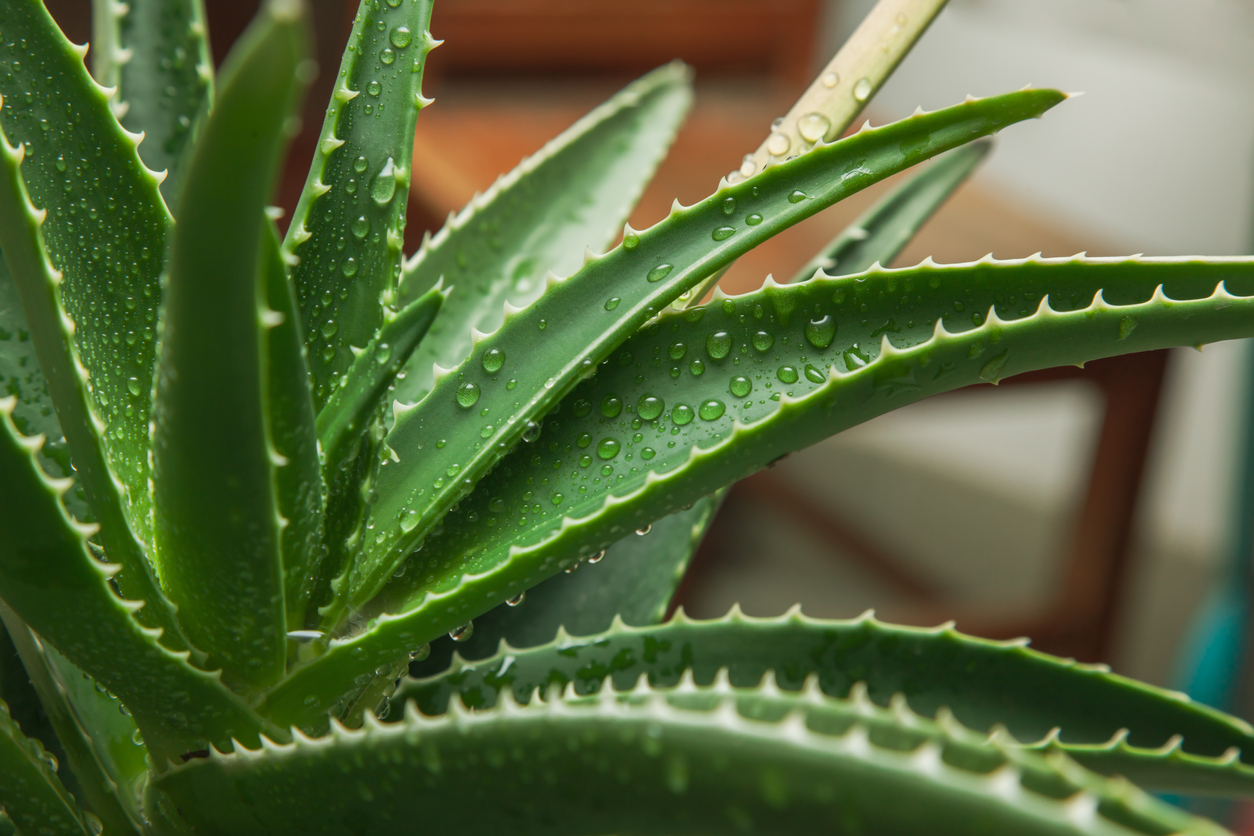
This low-maintenance succulent, with its plump, spiny-edged, gel-filled leaves, is a favorite because of its medicinal properties to treat sunburns, skin rashes, cuts, or other types of burns. But the plant is also beautiful in its own right, with a structural quality and a desert landscape vibe. Mature aloe plants can get as tall as 3 feet, and nearly as wide. It requires warm temperatures and a lot of bright light, but little watering. As with most succulents, the soil should dry out between waterings. Soggy soil can cause root rot in this drought-tolerant plant.
RELATED: How to Increase Humidity for Your Houseplants, Even During the Driest Days of Winter
7. Jade plant (Crassula ovata)
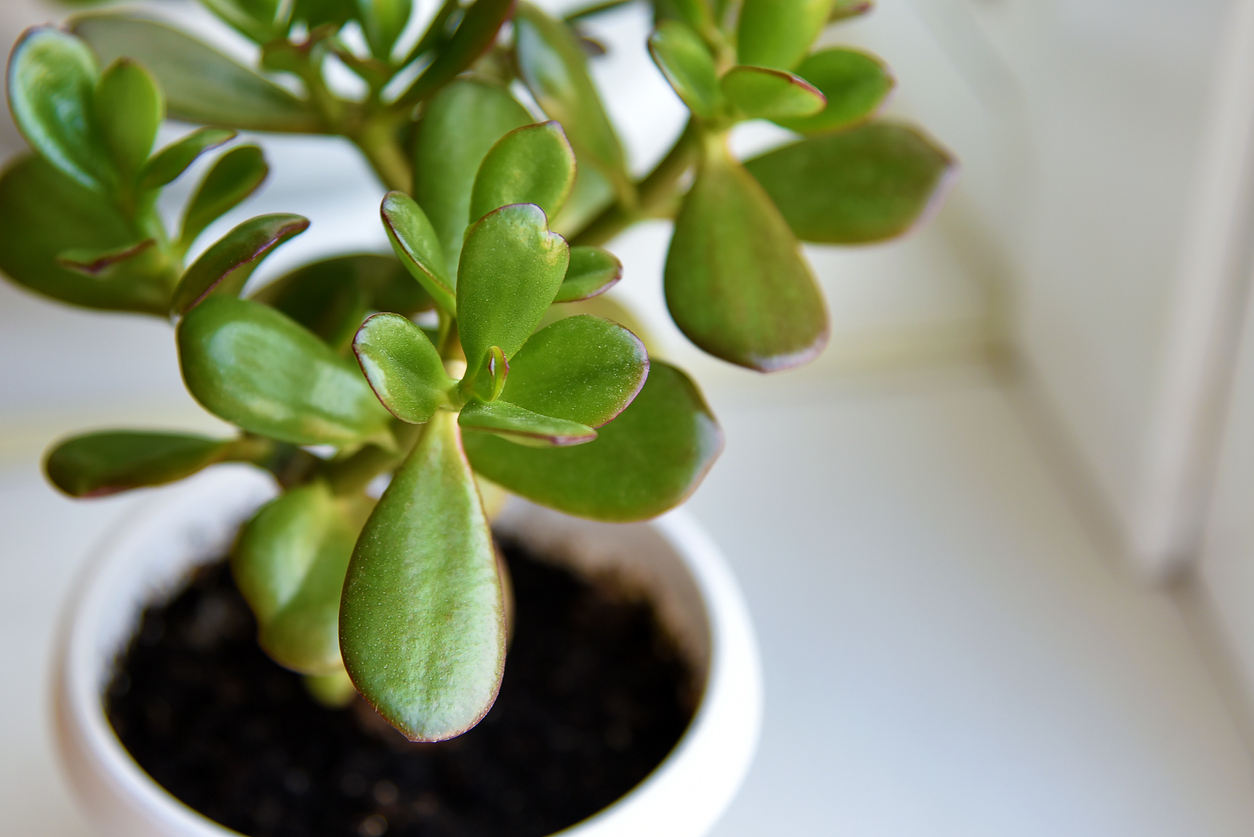
A symbol of good luck, the Jade plant is a low-maintenance sun lover. Favored because of its appearance of a miniature tree, it’s easy to care for. Jade does best with lots of bright sun, warm temperatures, low humidity, and only occasional watering. They’re susceptible to root rot if over-watered. Small plants rest happily on a plant shelf for windows, but this slow-growing succulent that can live up to 70 years may eventually get quite tall, topping out around 6 feet.
8. Ponytail palm (Beaucarnea recurvata)
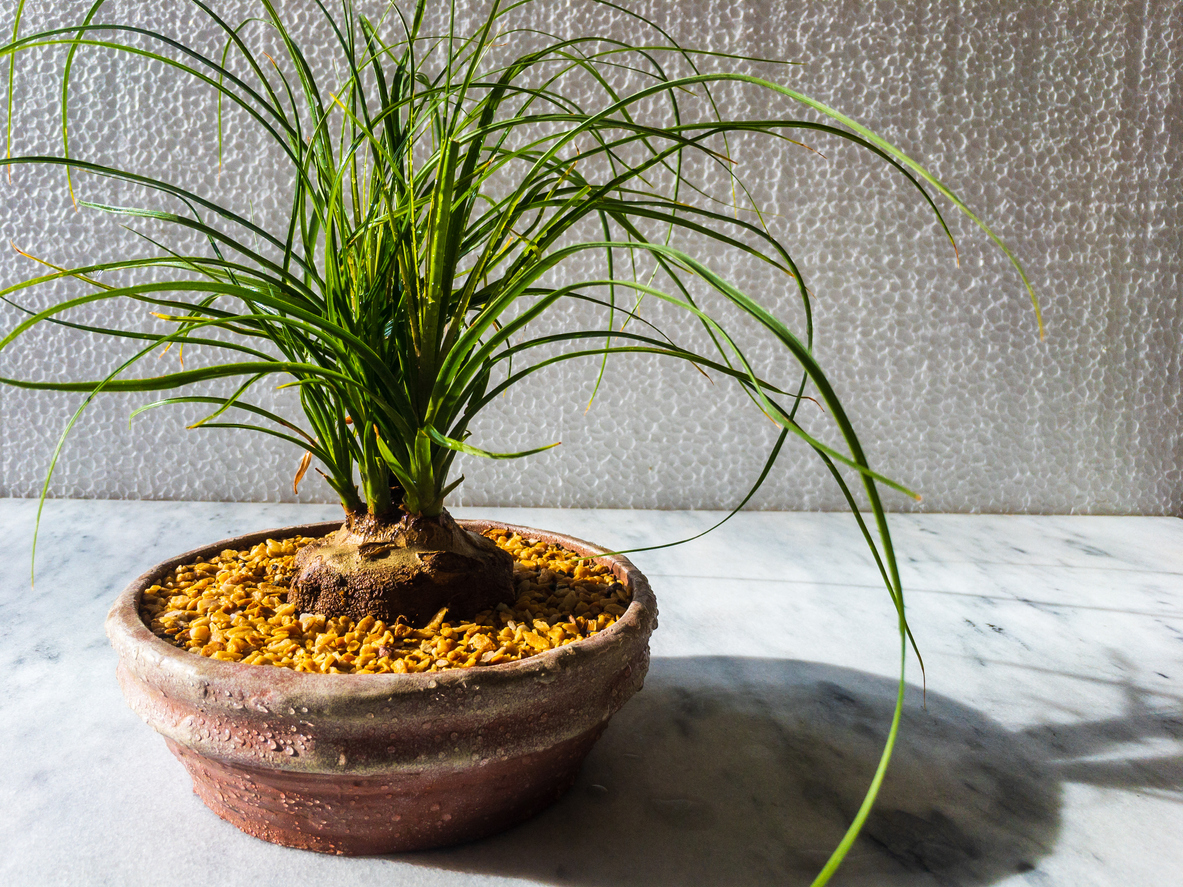
Despite its name, the ponytail palm is a succulent, not a palm. Its name is more indicative of the burst of long, thin leaves that erupt from a central, bulbous “trunk.” That thick trunk, or stem, stores water, so it’s best not to water too often—especially in winter. Easy to care for, this slow grower from the desert regions of Central America requires little maintenance other than plenty of light, well-drained soil, and warm temperatures.
9. Burro’s tail (Sedum morganianum)
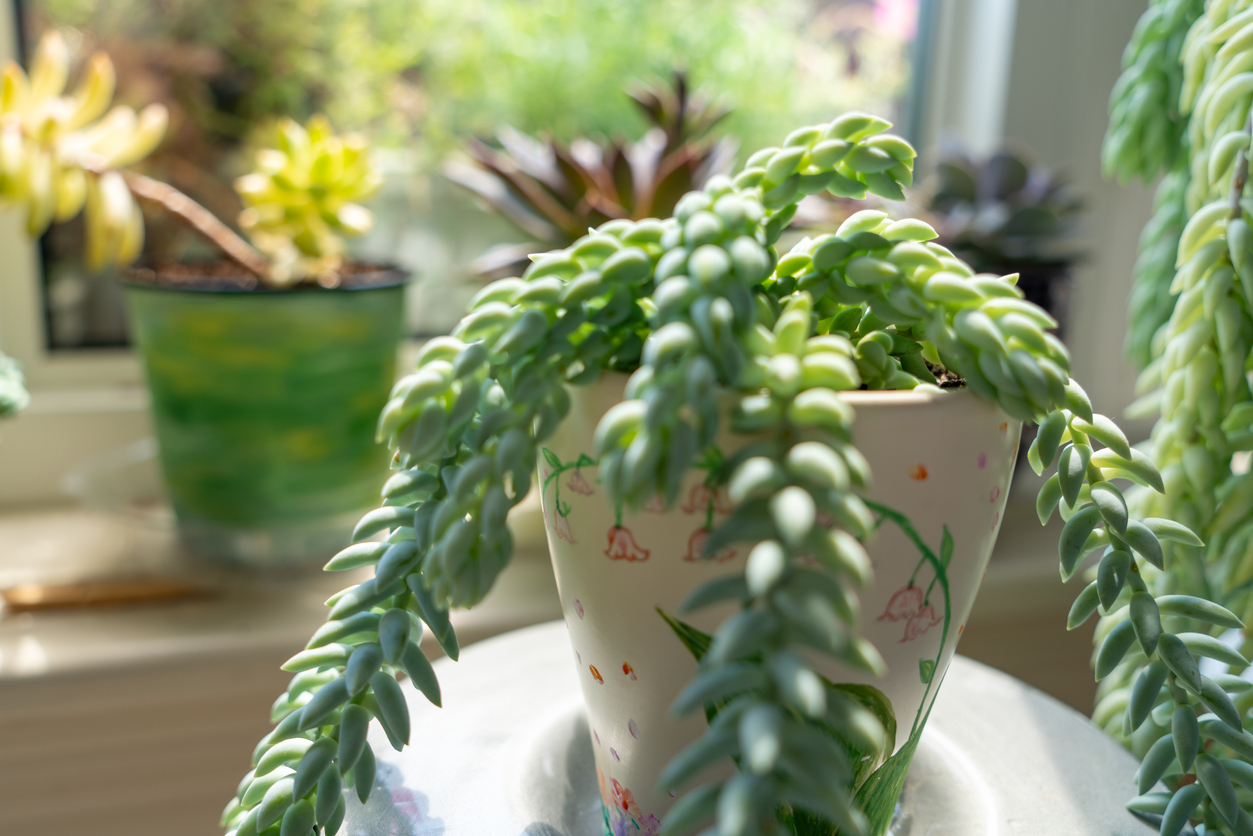
This succulent, also known as donkey’s tail, features small blue-green teardrop-shaped leaves tightly packed around stems that can reach lengths up to 4 feet. The drapey nature of the stems make this plant a good choice for hanging baskets. The plant is delicate; its leaves easily fall off if the plant is moved. However, they are easy to propagate, although growth is slow. They like bright sun and can handle moderate temperatures, but do not like to be over-watered. Too much water for this drought-tolerant succulent leads to root rot.
10. Fasciated haworthia (Haworthiopsis fasciata)
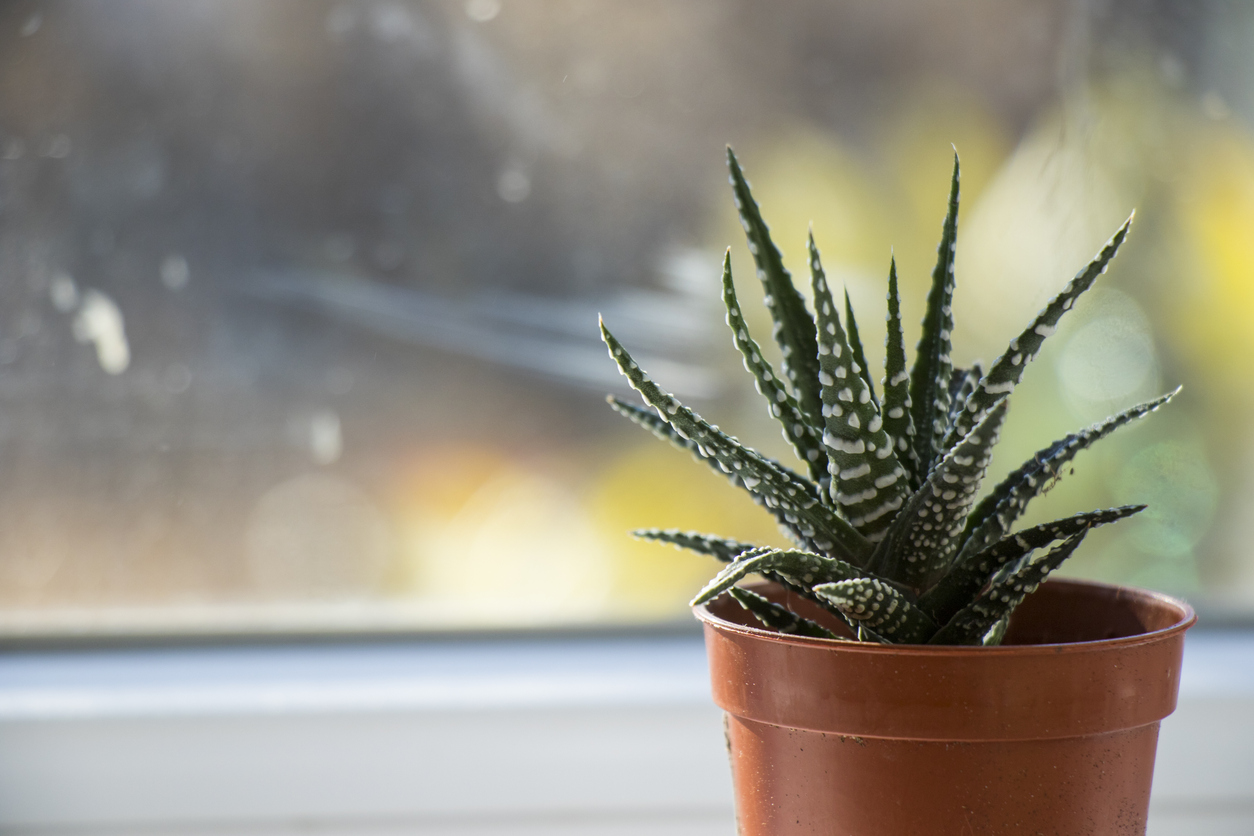
Commonly known as a zebra plant, this attractive succulent has horizontal white stripes, or bands, on its fleshy, dark green leaves, which grow upright from the center in a rosette pattern. Because this plant remains small, it’s a good candidate for an indoor window planter, as long as there is good drainage. Sandy soil is best to help keep moisture away from the roots. Keep them warm, water only when the top inch of soil is dry, and provide plenty of good light. Their leaves fade in low light. They even enjoy summering outdoors.
RELATED: The One Rule of (Green) Thumb When Decorating With Houseplants
11. Norfolk Island pine (Araucaria heterophylla)
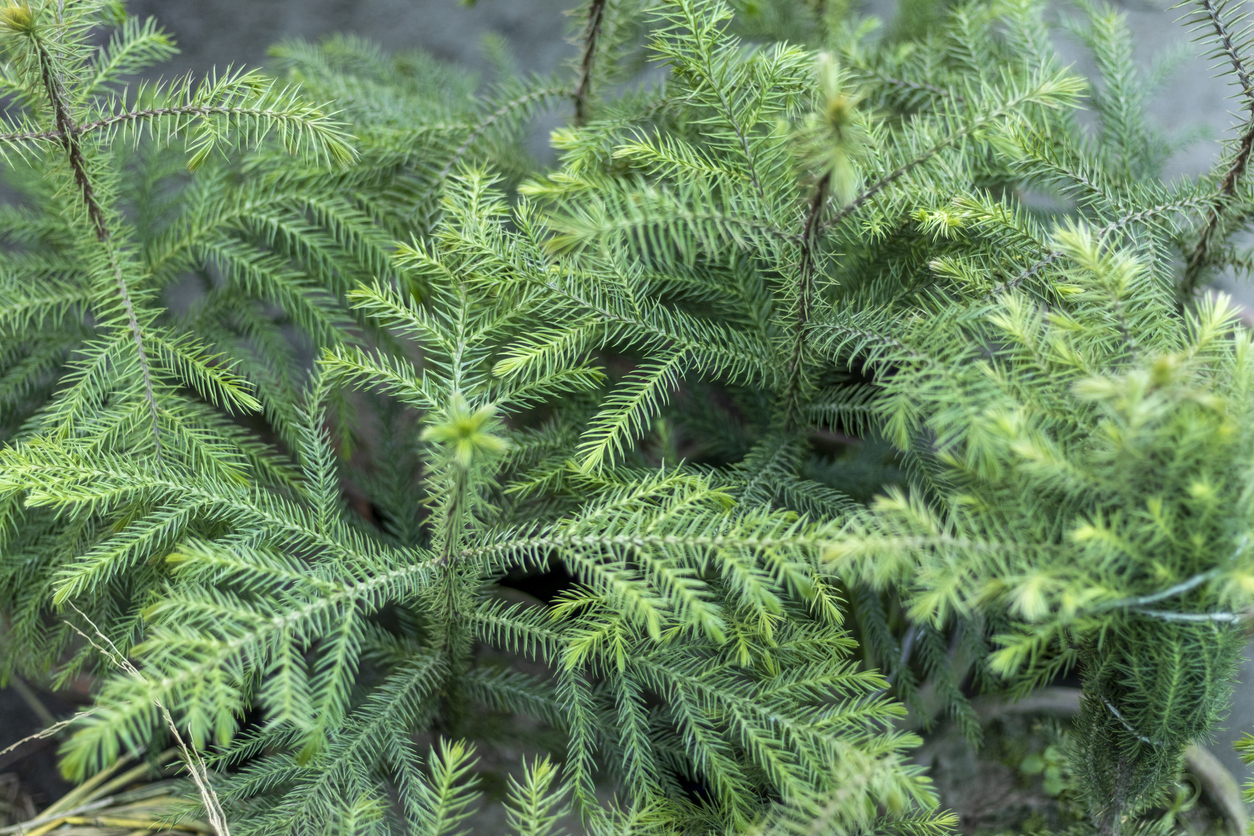
Often sold commercially as an indoor Christmas tree, the Norfolk Island pine isn’t really a pine tree; it’s a relative of the monkey puzzle tree (Araucaria araucana). Its soft needles on symmetric branches growing on thin, straight trunks give it the appearance of a conifer. Although it’s tropical, the Norfolk pine tolerates drier air, making it an ideal houseplant. It requires lots of bright light and moist, but not soggy, soil. Indoor height can reach 8 feet, but it can also be trained as a bonsai or miniature.
12. Yucca (Yucca spp.)
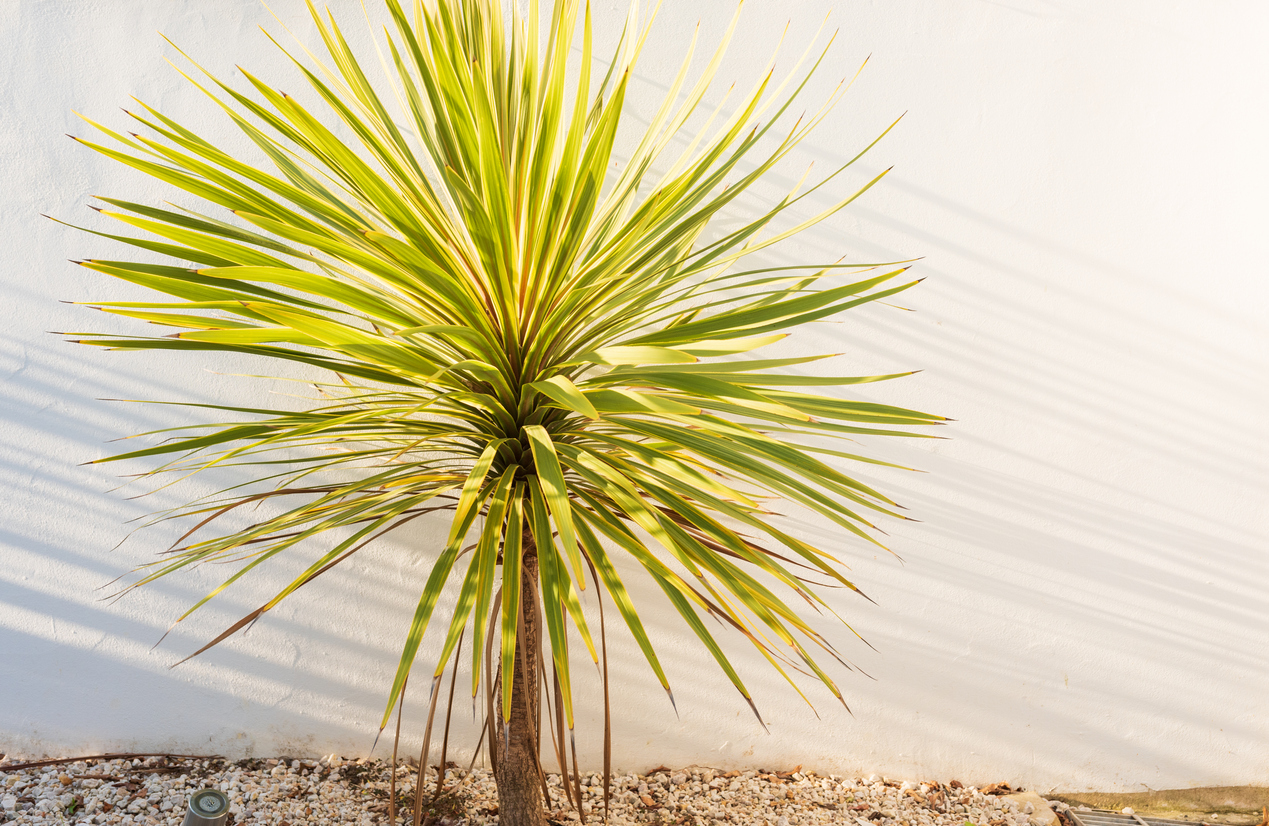
Most yuccas sold as houseplants have been grafted onto canes, increasing the plant’s height and drama. The rough, sword-like leaves of a yucca grow upright in spiky fashion—and some varieties have barbs on the tips. This drought-tolerant plant is extremely sensitive to overwatering and practically demands the maximum amount of bright light available, placing it in the houseplants for south-facing windows category. Accustomed to swings in desert temperatures, drafts, and dry air, they are adaptable houseplants.
About the Author
Lori Lovely has wide-ranging experience working for greenhouses, nurseries, landscaping companies, and interior plant-maintenance companies. She also spent many years working in floral design and is currently a Midwest farmer, although she specializes in tropical plants. To pursue her interest in rare tropical plants, she has traveled extensively throughout the Caribbean, South Pacific, and Central America to learn about cultivation and propagation of native species.
